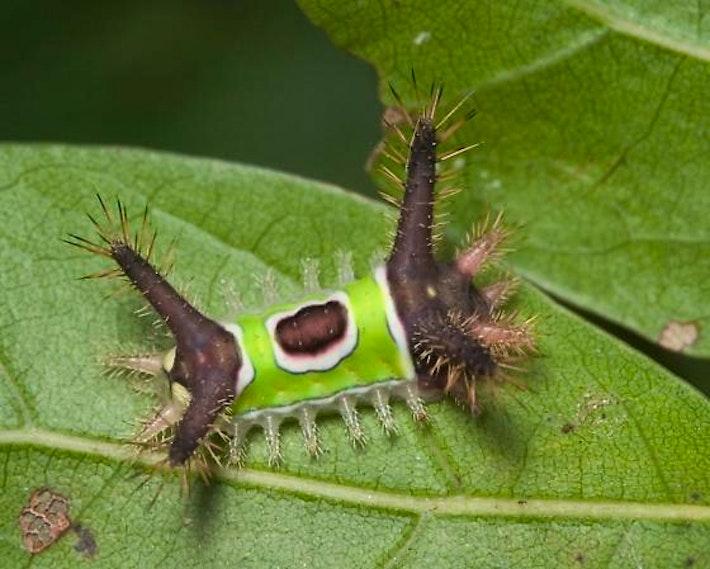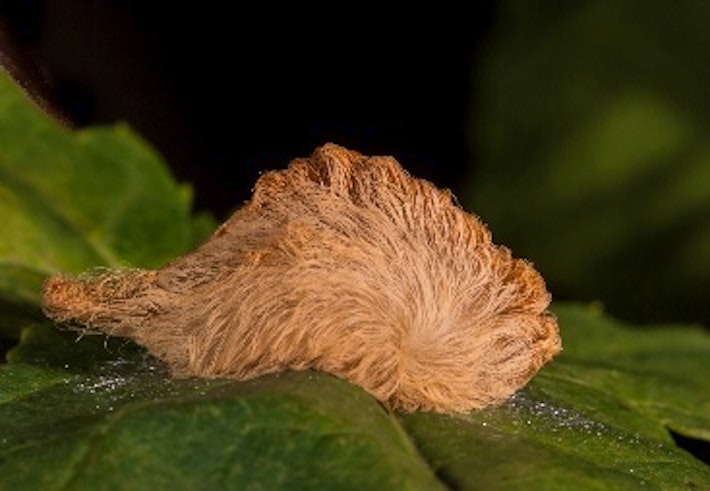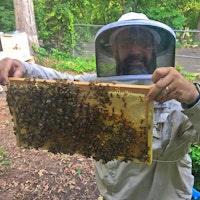Be Careful with Fuzzy and Hairy Caterpillars
Discovery Place Nature
With the seasons changing and summer coming to an end we will start to notice many of our caterpillars moving around. During fall, they may be found on food plants or wandering around looking for a place to pupate and are more readily seen.
While most caterpillars are harmless, even though some may look menacing (such as the hickory horned devil), there are a few that can cause mild to moderate stings. Of course, as a Naturalist, I always encourage curiosity and observation, but I don’t want to see anyone get injured, so it is important to make sure folks are aware that some caterpillars can be dangerous.
Some caterpillars have stinging hairs/spines are hollow and filled with venom from a gland at the base of the hairs. When contacted, the hairs break and venom gets into the wound caused by the hairs/spines. The older the caterpillar, the more potent its sting will be, with the most powerful right before it pupates. This time of year, this is the stage we will mostly see, resulting in the more dangerous time to come in contact with these species.
Just remember, while the caterpillars are dangerous, adult moths are not and do not have stinging hairs/spines.
Here are the most common species we may see this time of year:

Saddleback Caterpillar (Acharia stimulea)
This caterpillar is about an inch long with venomous spines on each end and along the bottom of its body. It has a green “blanket” covering its body, with a purplish black “bull’s eye” in the center. This is the most common stinging caterpillar in our area and is found on a variety of plants, but mostly apple, pear, cherry, plum, Pawpaw, roses, camellias, basswood and oak, as well as other trees. The sting of this caterpillar is been described as like a bee sting, with localized swelling and redness.

Io Moth (Automeris io)
The io moth is a beautiful moth with eyespots and is readily identified. This moth has 2-3 broods in our area, and October may be late for this species, however, with our mild weather this fall so far, the caterpillar can still be seen this time of year. This caterpillar feeds on hackberry, redbud, willow, blackberry, and pear trees, but can be seen anywhere when it is searching for an appropriate place to pupate.
This species pupates in the ground, so it can be seen or encountered walking around the leaf litter, etc. underneath the food plants above. The sting for this caterpillar is also relatively painful, like a wasp or hornet sting.

Southern Flannel Moth Caterpillar (Megalopyge opercularis)
This “cute” caterpillar is the most dangerous of the three. Because of how cute it looks, children obviously want to pick it up, making it even more dangerous. Also called the puss caterpillar, asp, woolly slug, or “possum bug”, this caterpillar has venomous spines hidden in the hairs (setae) on its body. When picked up, these spines deliver a powerful and painful sting. The venom can cause searing, throbbing pain, burning and sometimes a rash with red spots. Some folks experience swelling, nausea, abdominal pain, headache, even shock and respiratory distress. They are found around quite a few species of shade trees, ornamental shrubs, fruit trees, etc. that are most often associated with schools, homes, and other landscaping plants.
As with any sting, results and symptoms depend on the individual, but some may experience allergic reactions as with bee and wasp stings, and medical attention is required.
Please be aware of children playing around flowering shrubs, fruit trees, etc. and note that stings are not always the result of a bee, yellow jacket, or hornet and could be a caterpillar. While a child or adult may not be allergic to bees and wasps, they may have an allergic reaction to caterpillar stings. Talk to your children and make sure they know that just because a caterpillar may look cute, furry, or fuzzy, they should not be picked up or touched.
It’s okay to be curious and observe these eyespots creatures, but a good rule to remember is do not touch or pick up any caterpillars, especially fuzzy or hairy ones.

